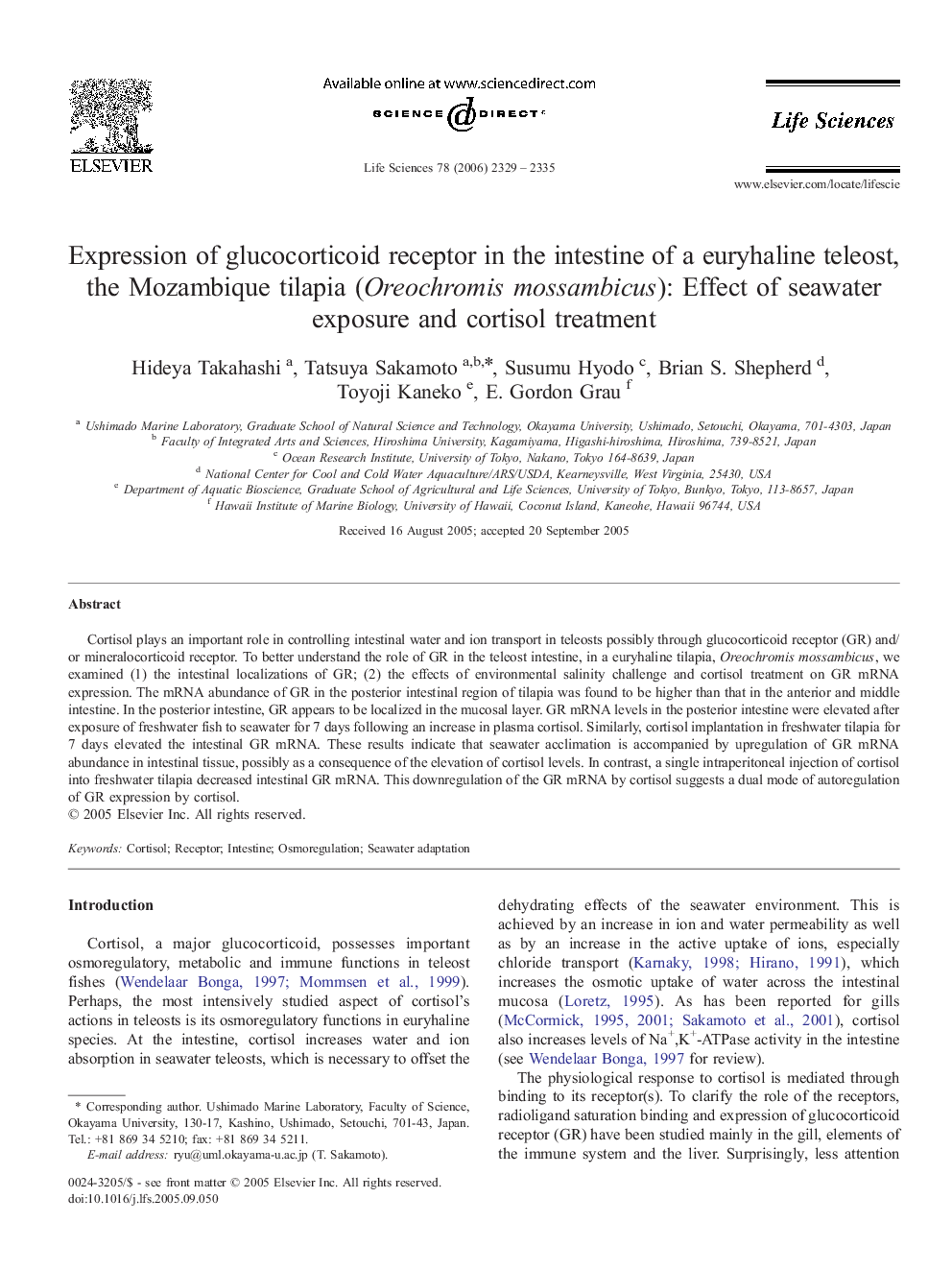| Article ID | Journal | Published Year | Pages | File Type |
|---|---|---|---|---|
| 2554296 | Life Sciences | 2006 | 7 Pages |
Cortisol plays an important role in controlling intestinal water and ion transport in teleosts possibly through glucocorticoid receptor (GR) and/or mineralocorticoid receptor. To better understand the role of GR in the teleost intestine, in a euryhaline tilapia, Oreochromis mossambicus, we examined (1) the intestinal localizations of GR; (2) the effects of environmental salinity challenge and cortisol treatment on GR mRNA expression. The mRNA abundance of GR in the posterior intestinal region of tilapia was found to be higher than that in the anterior and middle intestine. In the posterior intestine, GR appears to be localized in the mucosal layer. GR mRNA levels in the posterior intestine were elevated after exposure of freshwater fish to seawater for 7 days following an increase in plasma cortisol. Similarly, cortisol implantation in freshwater tilapia for 7 days elevated the intestinal GR mRNA. These results indicate that seawater acclimation is accompanied by upregulation of GR mRNA abundance in intestinal tissue, possibly as a consequence of the elevation of cortisol levels. In contrast, a single intraperitoneal injection of cortisol into freshwater tilapia decreased intestinal GR mRNA. This downregulation of the GR mRNA by cortisol suggests a dual mode of autoregulation of GR expression by cortisol.
